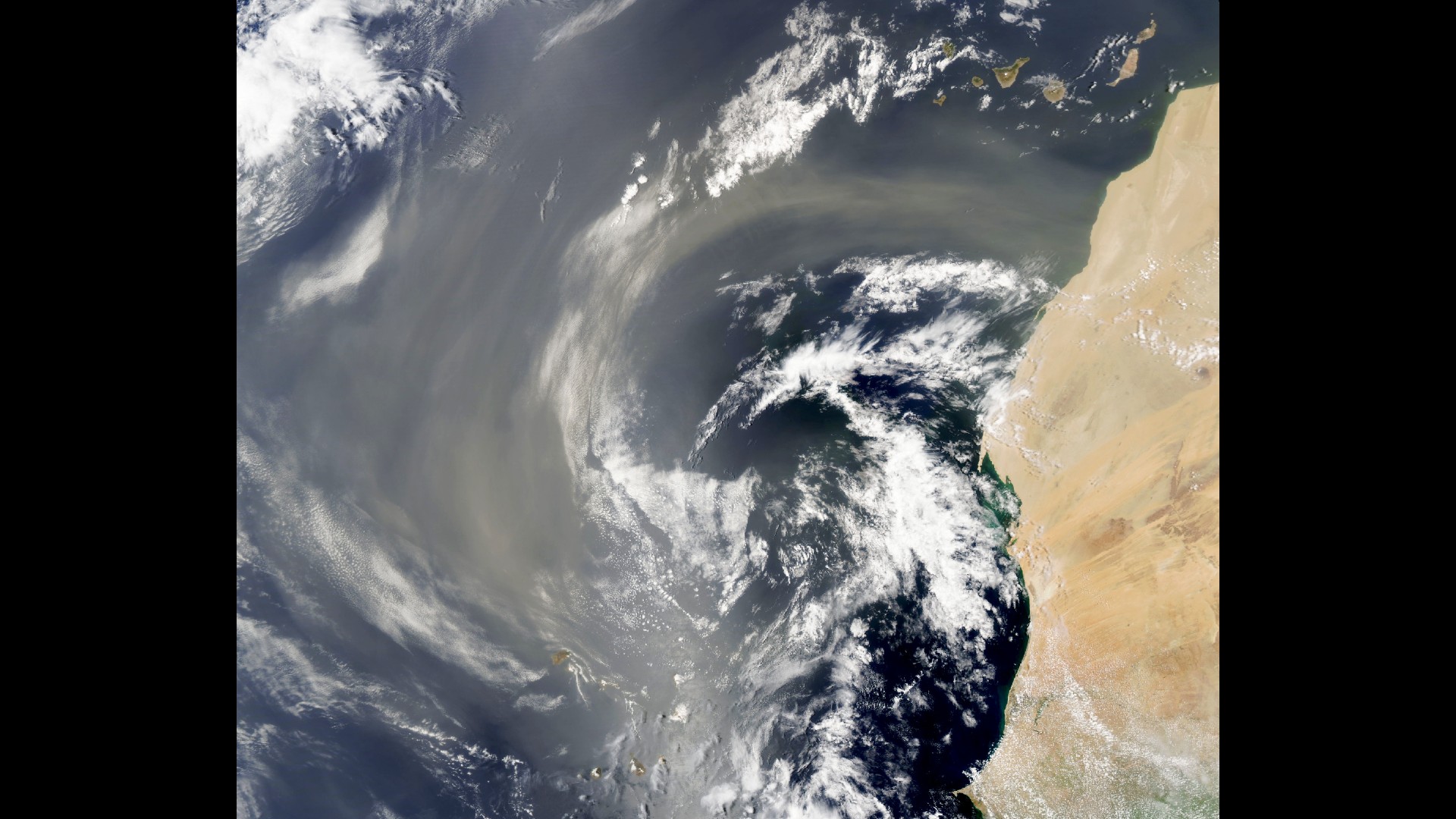NASA satellite captures Sahara Desert dust plume over the Atlantic Ocean
The plumes have even reached the East Coast of the United States.

Dust clouds have never looked this good.
July was a particularly blustery month in Africa's Sahara Desert, with great plumes of dust being drawn across the Atlantic towards the United States and the Caribbean. And NASA's Aqua satellite was privy to the show.
Using its Moderate Resolution Imaging Spectroradiometer (MODIS), the satellite took this natural-color image of a massive dust plume swirling off the Sahara over the ocean, stretching between the Canary Islands and Cabo Verde. Aqua is part of the international Earth Observing System (EOS) and studies the water cycle.
Related: New NASA chief scientist pledges a plan to renew agency's Earth satellite fleet
Though this specific image was taken on July 26, Aqua and other satellites captured many similar events throughout the month, indicating a more active month than normal. But the Sahara dust plumes are common — some 182 million tons of dust blow across the Atlantic each year — and they play an important role in Earth's climate system.
As they travel through the air, the dust particles both absorb and reflect sunlight. That contributes to the overall thermal regulation of the planet — and it also creates dramatic sunsets, which have been seen across Florida, Texas, and the Caribbean over the past month.
Dust plumes also affect cloud coverage and storm formation, particularly that of hurricanes. "Not only does [the dust plume] contain dry air, but there's typically a layer of high wind shear associated with it. Hurricanes hate both of those things," University of Miami meteorologist Brian McNoldy told NASA.
Get the Space.com Newsletter
Breaking space news, the latest updates on rocket launches, skywatching events and more!
The increase in dust plumes in July may have contributed to the currently quiet hurricane season. As of today, there have only been three named storms in the Atlantic, which is about 41% of average. "That's quiet, but things can turn around in a blink of an eye with just one hurricane," said McNoldy. "If we're still at 41 percent of average at the end of September, that would be a definite sign of a quiet season."
Dust not only plays a role in Earth's climate, but also its biological systems. It acts as a fertilizer of sorts — the minerals in dust, like iron and phosphorus, are crucial for plants and phytoplankton. The Saharan dust, in particular, blows across to the Americas and is responsible for providing nutrients to biodiverse places like the Amazon rainforest.
Follow Stefanie Waldek on Twitter @StefanieWaldek. Follow us on Twitter @Spacedotcom and on Facebook.
Join our Space Forums to keep talking space on the latest missions, night sky and more! And if you have a news tip, correction or comment, let us know at: community@space.com.

Space.com contributing writer Stefanie Waldek is a self-taught space nerd and aviation geek who is passionate about all things spaceflight and astronomy. With a background in travel and design journalism, as well as a Bachelor of Arts degree from New York University, she specializes in the budding space tourism industry and Earth-based astrotourism. In her free time, you can find her watching rocket launches or looking up at the stars, wondering what is out there. Learn more about her work at www.stefaniewaldek.com.









